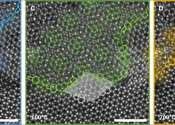Light-activated skeletal muscle engineered (w/ Video)
Many robotic designs take nature as their muse: sticking to walls like geckos, swimming through water like tuna, sprinting across terrain like cheetahs. Such designs borrow properties from nature, using engineered materials ...








